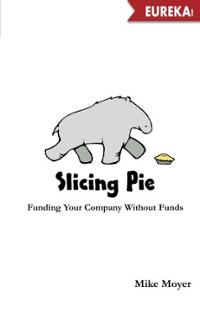An EPFL entrepreneur had contacted me about equity split between founders, employees and investors in a start-up. I mentioned my experience and related blog post on the topic: Equity Splits in Start-ups. Then he came back to me with a book he advised me to read. I am half way through it and it has interesting (and new to me) lessons. So thanks Justin 🙂
The book is entitled Slicing Pie, and subtitled Funding Your Company Without Funds.
I will probably go back when I am finished with this book, but already, here are some examples of what I liked:
The Gap
Somewhere between the inception of your earth-changing idea and the investor presentation to Andreessen Horowitz there is a gap. During that gap, you are expected to have actually built something that resembles a business enough that the gentle and kind venture capitalist will decide that you have your act together and write you a fact check. I call it “the Gap” because it’s during this time that you either fill the gap with behaviors that create a business or let is consume you and your wonderful idea. Most fledging businesses experience the latter.
The days of back-of-the-envelope deals are over. (In fact, they may never have actually existed.) Few investors are willing to provide capital to a company that is little more than a rough idea.
Nowadays, you need to have something worth investing in which often means a management team, a business plan, and, if you’re smart, a working prototype. For bonus points get a few beta customers who are actually paying you. Now you have something worth discussing. [page 2]
The need for Entrepreneurs
“Entrepreneurs give security to other people; they are the generators of social welfare.” The country needs entrepreneurs, the world needs entrepreneurs. Without them not much would happen.
In spite of the exciting life and important role of entrepreneurs, most people never become entrepreneurs. To most people, life is too risky. Most people can’t handle the ambiguity. Most people are afraid of failure. Every entrepreneur fails more often than they succeed. [pages 9-10]
Good and Bad Lessons
Failure is how an entrepreneur learns. Good lessons improve an entrepreneur chances for future success. If you created a product that nobody wants, if your employee leaves you, if a competitor comes out, if your marketing did not work, if you run out of money, you will learn.
Being an entrepreneur requires a lot of trust and confidence.
But if they get burnt by partners, they learn bad lessons. They spend more time covering their own butts. They learn to move more slowly and take fewer risks. They learn to be less like entrepreneurs and more like everyone else. [pages 10-11]
Grunts
Grunts are people who are willing to forgo cash compensation in exchange for a piece of the pie. Grunts do the work necessary to turn an idea into a reality. They will do the fun work and the dirty work. They are as comfortable licking stamps as they are building a strategic plan. [page 28] (I love grunts probably because in some aspects I am one, even if not an entrepreneur!)
As a conclusion to his first chapter, author Mike Moyer claims that an entrepreneur needs a method for slicing the pie that is easy to understand and
– rewards participants for the relative value they provide,
– provides motivation for them to continue to provide more ingredients,
– allows founders to fairly add or subtract participants to or from the company,
– is flexible in the face of rapid change.
More in part 2!


Pingback: Start-Up: the book » Blog Archive » Slicing Pie (how to fairly split equity) – Part 2